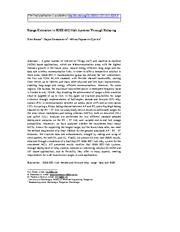A copy of this work was available on the public web and has been preserved in the Wayback Machine. The capture dates from 2019; you can also visit the original URL.
The file type is application/pdf.
Range Extension in IEEE 802.11ah Systems Through Relaying
2017
Wireless personal communications
A great number of Internet of Things (IoT) and machine-to-machine (M2M) based applications require energy efficient, long range and low data rate wireless communication links. In order to offer a competitive solution in these areas, IEEE 802.11 standardization group has defined the "ah" amendment, the first sub-1GHz WLAN standard, with flexible channel bandwidths, starting from 1MHz, up to 16MHz, and many other physical and link layer improvements, enabling long-range and energy efficient
doi:10.1007/s11277-017-4334-9
fatcat:qmtvdebhlvgifmhr2of72uncja

